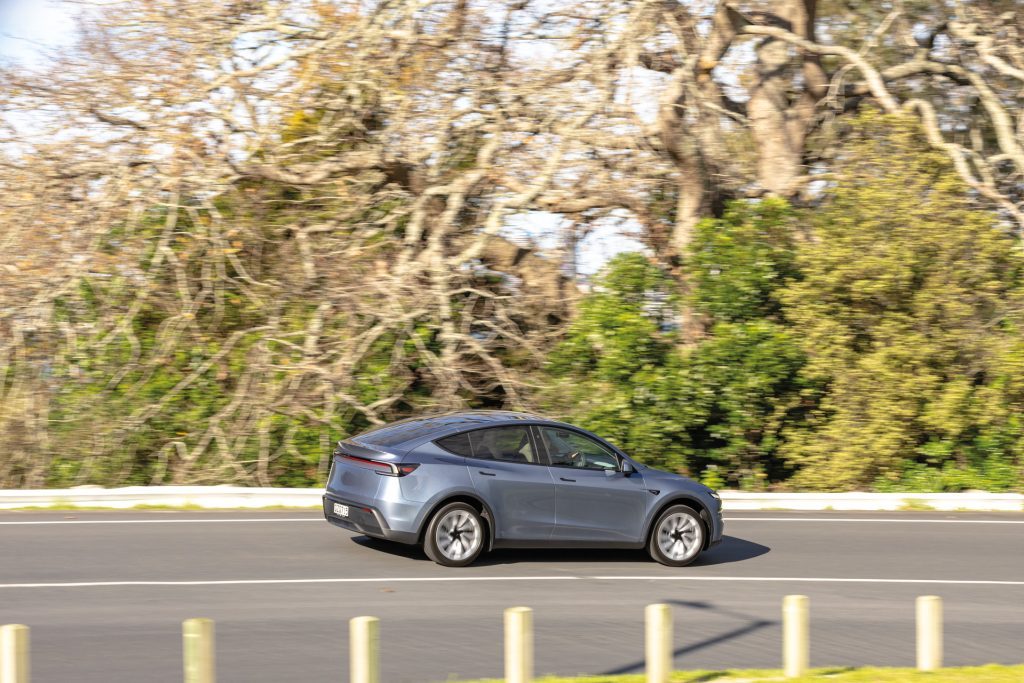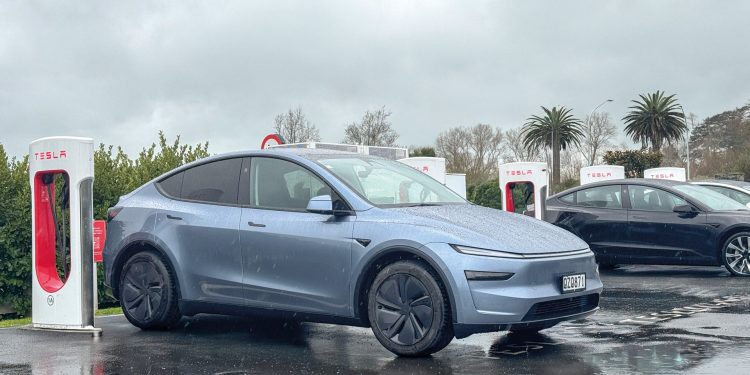2025 Tesla Model Y RWD
Words: Richard Edwards | Photos: Alex Schultz
School holidays, torrential rain, and a cross-country mission to take my daughter to the “exotic” Bay of Plenty town of Edgecumbe might not sound like the perfect way to test Tesla’s updated Model Y Standard Range. But add a run back to Auckland for a work event and you have the sort of mixed driving that really shows whether an EV is up for the job.
The facelifted “Juniper” Model Y, fresh from its NZ launch, didn’t put a foot wrong. It turned what could have been a grind into a genuinely enjoyable family trip, showing just how much the charging strategy can affect your wallet, and how the looming arrival of universal Road User Charges could change the equation again.
Packing practicality
This entry-level rear-wheel drive Standard Range starts at $67,900 plus on-roads. Ours wore the standard 19-inch wheels and a week’s worth of road grime. Design tweaks over the previous Y include a reshaped nose, new LED lighting front and rear, and detail changes inside that tidy up the dash and add a touch more premium feel.
Boot space is a strong point: 854 litres with the seats up and 2158 litres with them folded, plus a 117-litre frunk. On this trip, the rear boot swallowed our bags, odds and ends and, under the floor, our medium-size portable fridge and freezer which we plugged into the rear power socket. The frunk held charging cables and kept other gear out of the cabin.
Comfort for the long haul
The Juniper’s improved ride comfort showed itself immediately. The Model Y still leans toward firm, but the damping now feels better judged, even over New Zealand’s patchy chipseal. Laminated glass and extra insulation have cut wind noise, though coarse-surface roar from the tyres is still noticeable.
Inside, the new fabric dash trim and ambient lighting lift the cabin, and the seats proved all-day comfortable. The glass roof kept the interior airy without too much glare in winter, and rear passengers get their own screen for entertainment and climate control.
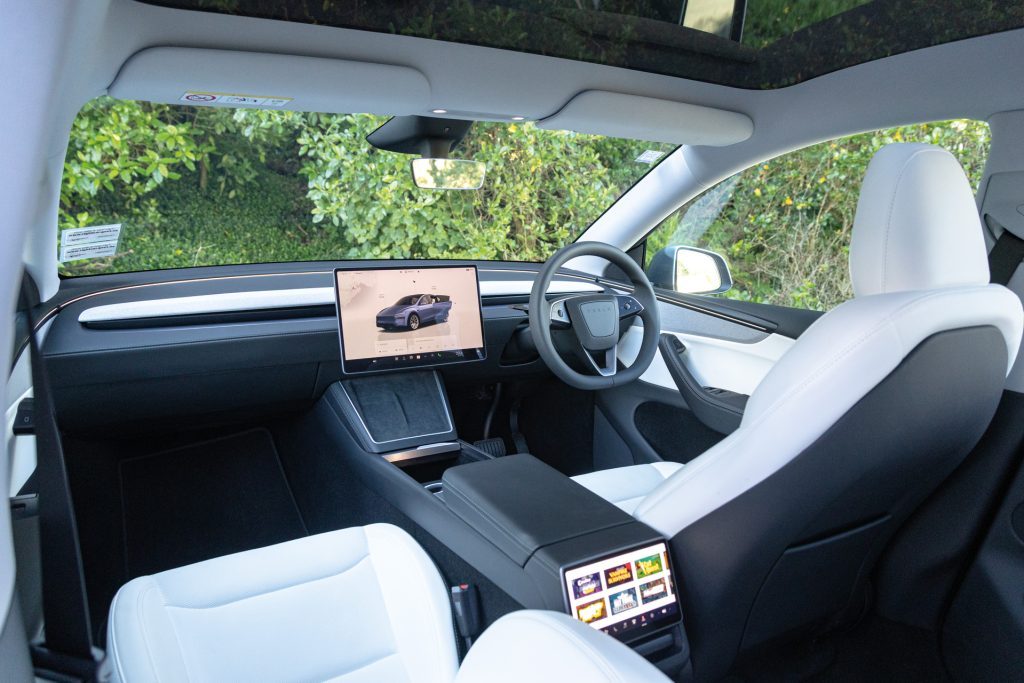
The drive: confident in all weathers
Over multiple legs from Northland to Edgecumbe, then Auckland, then back north, the Model Y took torrential rain and slippery surfaces in its stride. The 200kW single rear motor delivers brisk acceleration and plenty of flexibility for overtakes, with stability that inspires confidence even in standing water. Steering is direct, and cornering feels planted without the roll you might expect from an SUV.
Tesla’s Autopilot and “Navigate on Autopilot” features came into their own on the motorway. While not flawless, they took a big chunk out of the mental load in heavy traffic and long stints, reducing fatigue. Plus, its self parking feature – pick a spot and the car will completely park itself – is developing well.
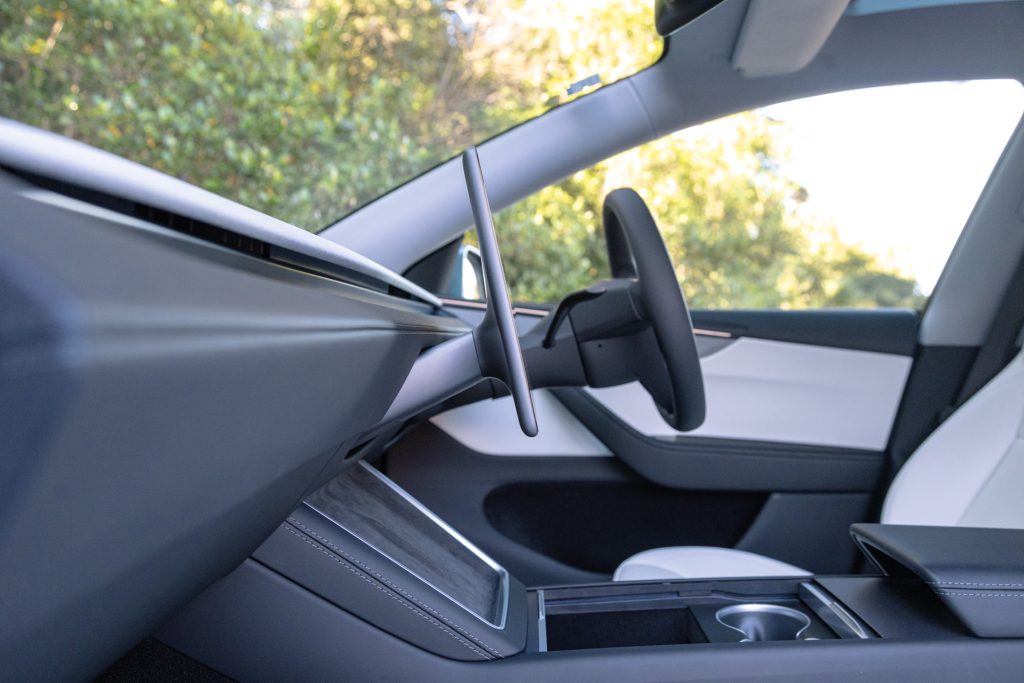
Charging on the road
Tesla’s Supercharger network, supplemented by ChargeNet, made this trip viable. This car’s charging curve is among the best in its class, ramping quickly, holding peak power longer, and often exceeding quoted DC speeds when conditions are right.
While more locations would be welcome, every stop was quick enough to grab a coffee and stretch. Our 1800km journey averaged 150Wh/km, or 270kWh total. The first 60kWh from home at $0.25 per kWh cost $15. The rest was public charging at $0.7175/kWh, totalling $150.68. Add $137 in RUCs (at $76 per 1000km) and the trip cost about $303.
A Toyota RAV4 Hybrid, at 5.3L/100km and $2.71/L, would have cost roughly $259 in petrol. In this case, heavy use of public fast-charging tipped the scales in the RAV4’s favour. If you can charge at your destination or use more AC charging, the Tesla’s advantage quickly returns.
If RUCs for all light vehicles arrive as proposed, that $137 line won’t just be on EV drivers’ bills, shifting the balance back toward battery power.
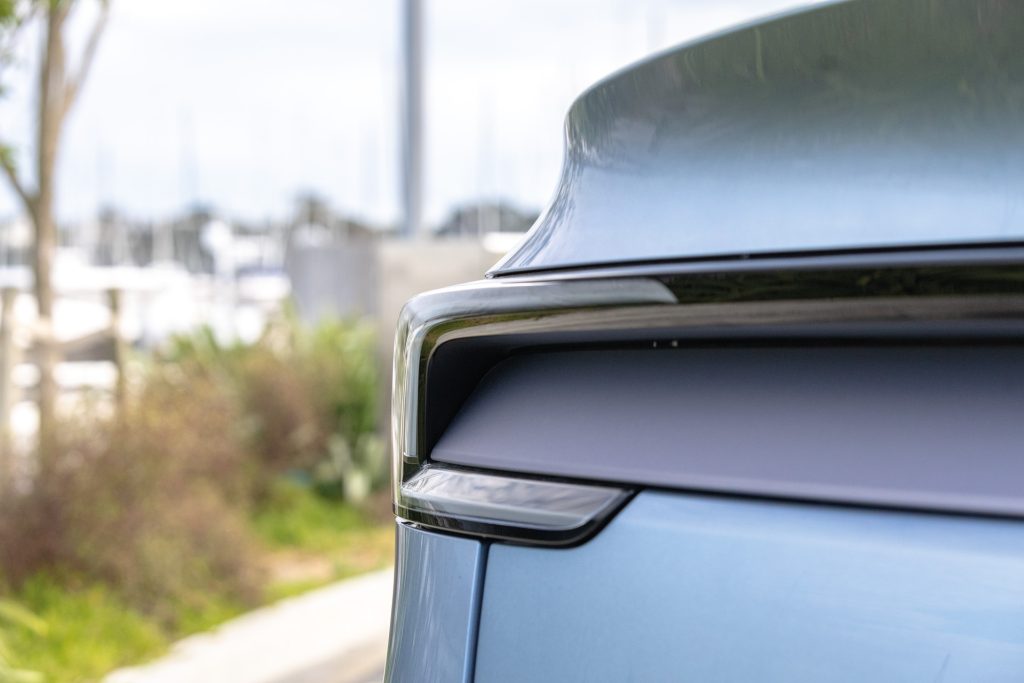
Efficiency edge
The Y’s standout quality remains its efficiency. Against rivals like the BYD Sealion 7, Kia EV5 and VW ID.4, the Tesla consistently uses less energy in real-world driving. We saw over 400km of range between charges in mixed driving, even with some brisk motorway sections.
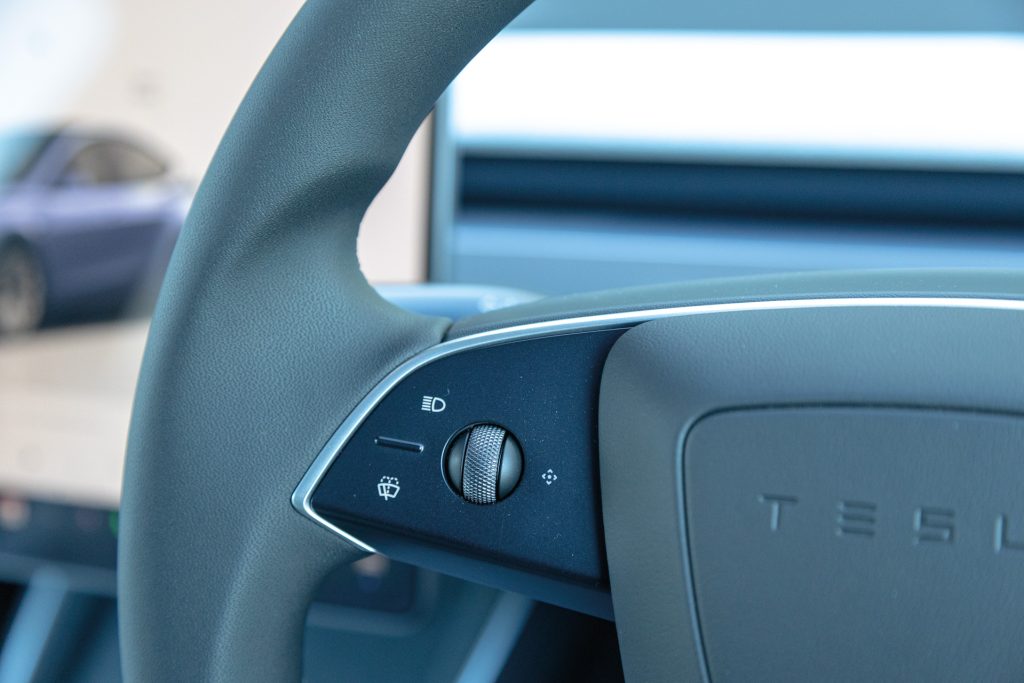
Everyday usability
The Tesla app remains the class leader, with remote climate pre-conditioning, live location tracking, and detailed charging controls.
The car’s not perfect. The indicator stalk feels a bit downmarket, there are fewer USB-C ports up front than we’d like, and the wireless chargers can be fussy about bottle sizes. Many won’t like the need to shift the transmission – figuratively, there isn’t really one – using the screen or buttons by the rear vision mirror.
The lack of factory-supported vehicle-to-load capability is also a notable omission for buyers wanting to power tools, appliances or a campsite directly from the car. These are minor niggles in an otherwise cohesive package.
The facelifted Tesla Model Y Standard Range handled a family holiday in foul weather with ease. It’s comfortable, quick, spacious, and more efficient than most of its peers. Charging is fast, the tech works, and build quality now feels genuinely premium.
Yes, on this trip the running costs edged higher than a petrol-hybrid thanks to public charging rates and RUCs. But with smarter charging habits, or once RUCs apply to all light vehicles, the calculation shifts. The Model Y remains one of the most complete EVs on sale in New Zealand and, with the Juniper updates, it’s better than ever for both the daily grind and the long, wet, school holiday slog to Edgecumbe and back.
